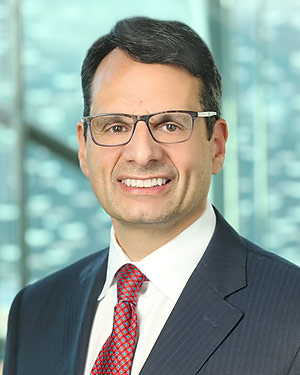Research Lab Results
-
Vestibular Neurophysiology Laboratory
The mission of the laboratory of vestibular neurophysiology is to advance the understanding of how the body perceives head motion and maintains balance - a complex and vital function of everyday life. Although much is known about the vestibular part of the inner ear, key aspects of how the vestibular receptors perceive, process and report essential information are still mysterious. Increasing our understanding of this process will have tremendous impact on quality of life of patients with vestibular disorders, who often suffer terrible discomfort from dizziness and vertigo. The laboratory group's basic science research focuses on the vestibulo-ocular reflexes - the reflexes that move the eyes in response to motions of the head. They do this by studying the vestibular sensors and nerve cells that provide input to the reflexes; by studying eye movements in humans and animals with different vestibular disorders, by studying effects of electrical stimulation of vestibular sensors, and by using mathematical models to describe these reflexes. Researchers are particularly interested in abnormalities of the brain's inability to compensate for vestibular disorders. -
The Hackam Lab for Pediatric Surgical, Translational and Regenerative Medicine
David Hackam’s laboratory focuses on necrotizing enterocolitis (NEC), a devastating disease of premature infants and the leading cause of death and disability from gastrointestinal disease in newborns. The disease strikes acutely and without warning, causing sudden death of the small and large intestines. In severe cases, tiny patients with the disease are either dying or dead from overwhelming sepsis within 24 hours. Surgical treatment to remove most of the affected gut results in lifelong short gut (short bowel) syndrome. The Hackam Lab has identified a critical role for the innate immune receptor toll-like receptor 4 (TLR4) in the pathogenesis of necrotizing enterocolitis. The lab has shown that TLR4 regulates the development of the disease by tipping the balance between injury and repair in the stressed intestine of the premature infant. Developing an Artificial Intestine A key goal is to create, in the laboratory, new intestines made from patients’ own cells, which can then be implanted into the patient to restore normal digestive function. This innovative design could transform child development and quality of life in necrotizing enterocolitis survivors without the risks of conventional donor transplant. -
Tsapkini Language Neuromodulation Lab
We are exploring whether anodal tDCS when administered in combination with spelling, naming, or working memory therapy can improve language performance of PPA and MCI participants at least in the short term more than behavioral therapy alone. We are also investigating whether and how tDCS alters the neuropeptide signature in participants with PPA and MCI. We use proton magnetic resonance spectroscopy (1H-MRS) to monitor neuropeptide concentrations at the areas of stimulation. We hypothesize that tDCS will stabilize the decline of specific neuropeptides, but only in those areas of the brain where tDCS effectively results in more efficient gains in language compared to language therapy alone (with sham tDCS). Study results may help optimize future intervention in individuals with PPA and MCI by providing treatment alternatives in a neurodegenerative condition with no proven effective treatment. A better understanding of the therapeutic and neuromodulatory effects of tDCS in PPA and MCI will offer insight into ways of impeding neurodegeneration that may improve quality of life for individuals with PPA and MCI and may provide insights into the mechanisms of this treatment for augmenting therapy for stroke as well. -
The Nauen Lab
Epilepsy affects 1-3% of the population and can have a profound impact on general health, employment and quality of life. Medial temporal lobe epilepsy (MTLE) develops in some patients following head injury or repeated febrile seizures. Those affected may first suffer spontaneous seizures many years after the initial insult, indicating that the neural circuit undergoes a slow pathologic remodeling over the interim. There are currently no methods of preventing the development of MTLE. It is our goal to better understand the process in order to slow, halt, and ultimately reverse it. Our laboratory draws on electrophysiology, molecular biology, and morphology to study the contribution of dysregulated neurogenesis and newborn neuron connectivity to the development of MTLE. We build on basic research in stem cell biology, hippocampal development, and synaptic plasticity. We work closely with colleagues in the Institute for Cell Engineering, Neurology, Neurosurgery, Biomedical Engineering, and Radiology. As physician neuropathologists our grounding is in tissue alterations underlying human neurologic disease; using human iPSC-derived neurons and surgical specimens we focus on the pathophysiological processes as they occur in patients. By understanding changes in cell populations and morphologies that affect the circuit, and identifying pathologic alterations in gene expression that lead to the cell-level abnormalities, we hope to find treatment targets that can prevent the remodeling and break the feedback loop of abnormal activity > circuit change > abnormal activity.




